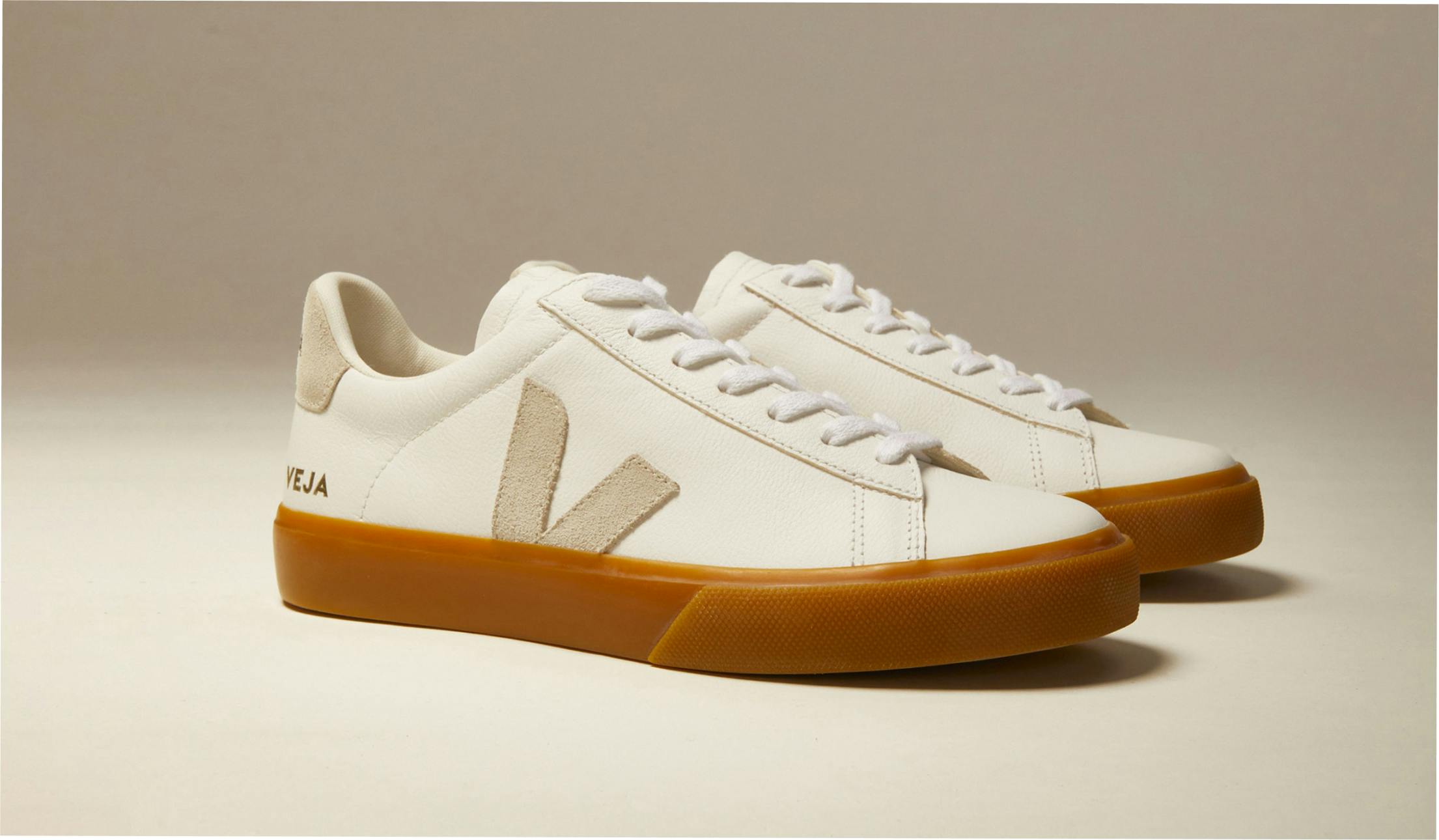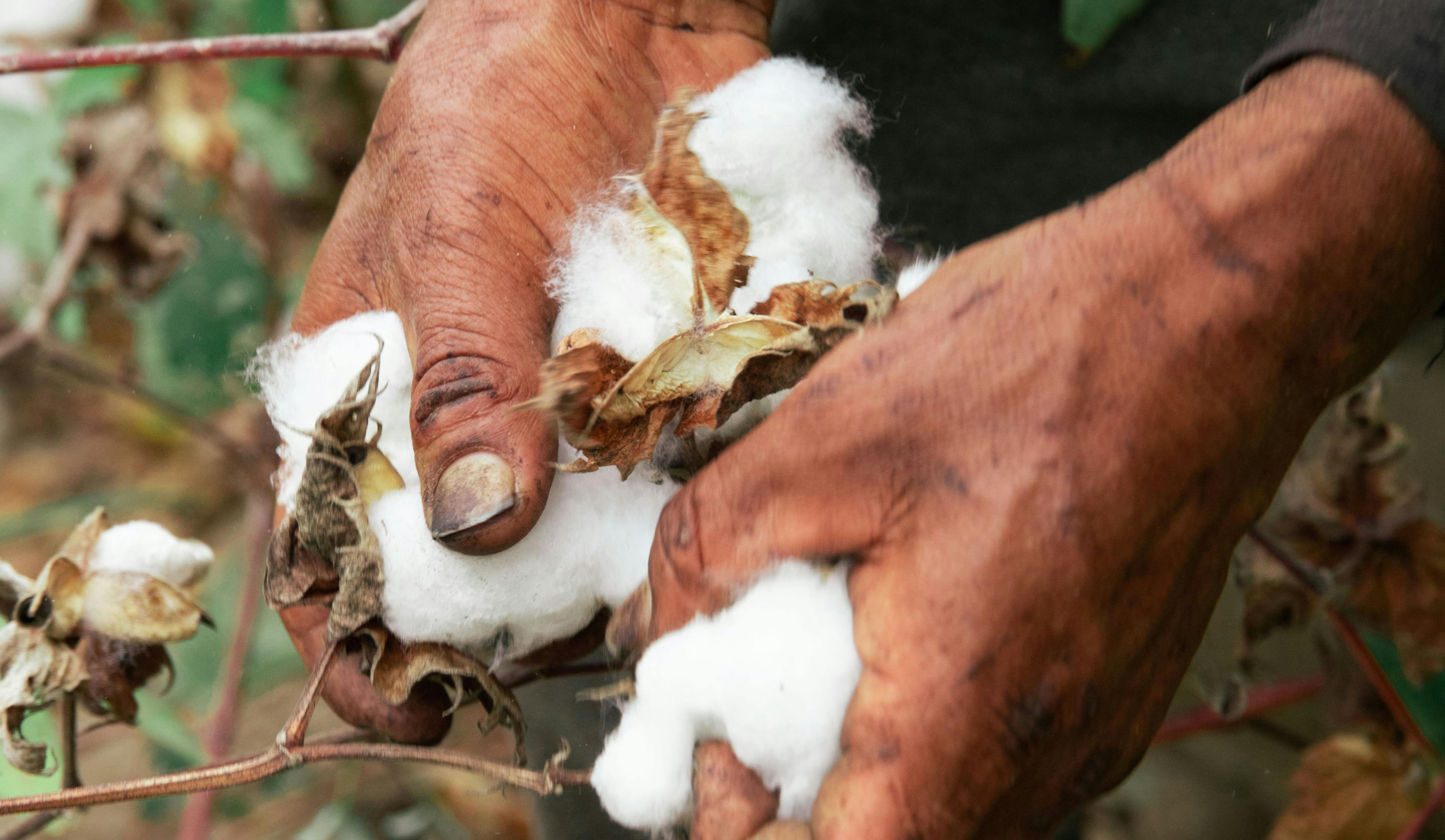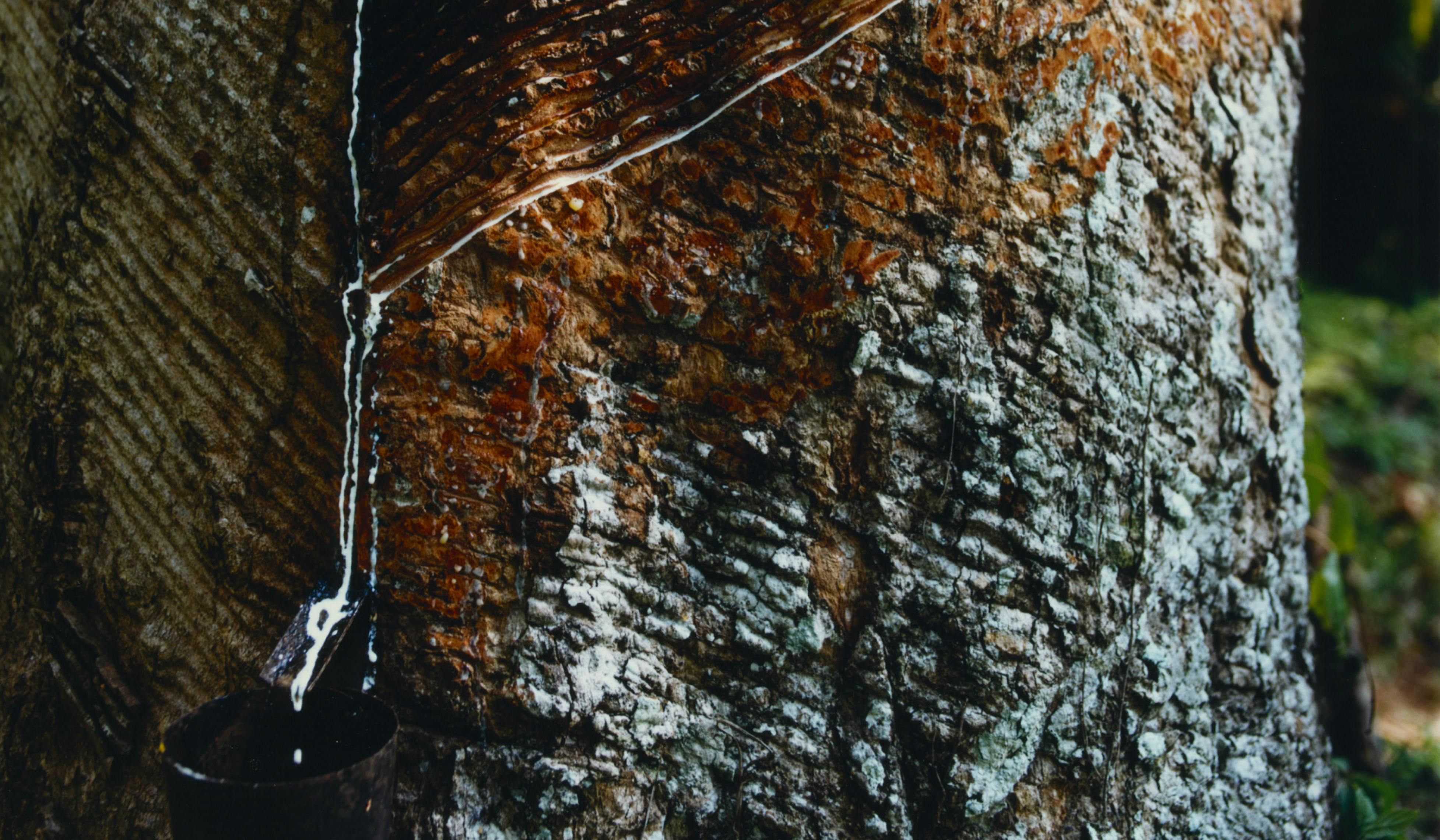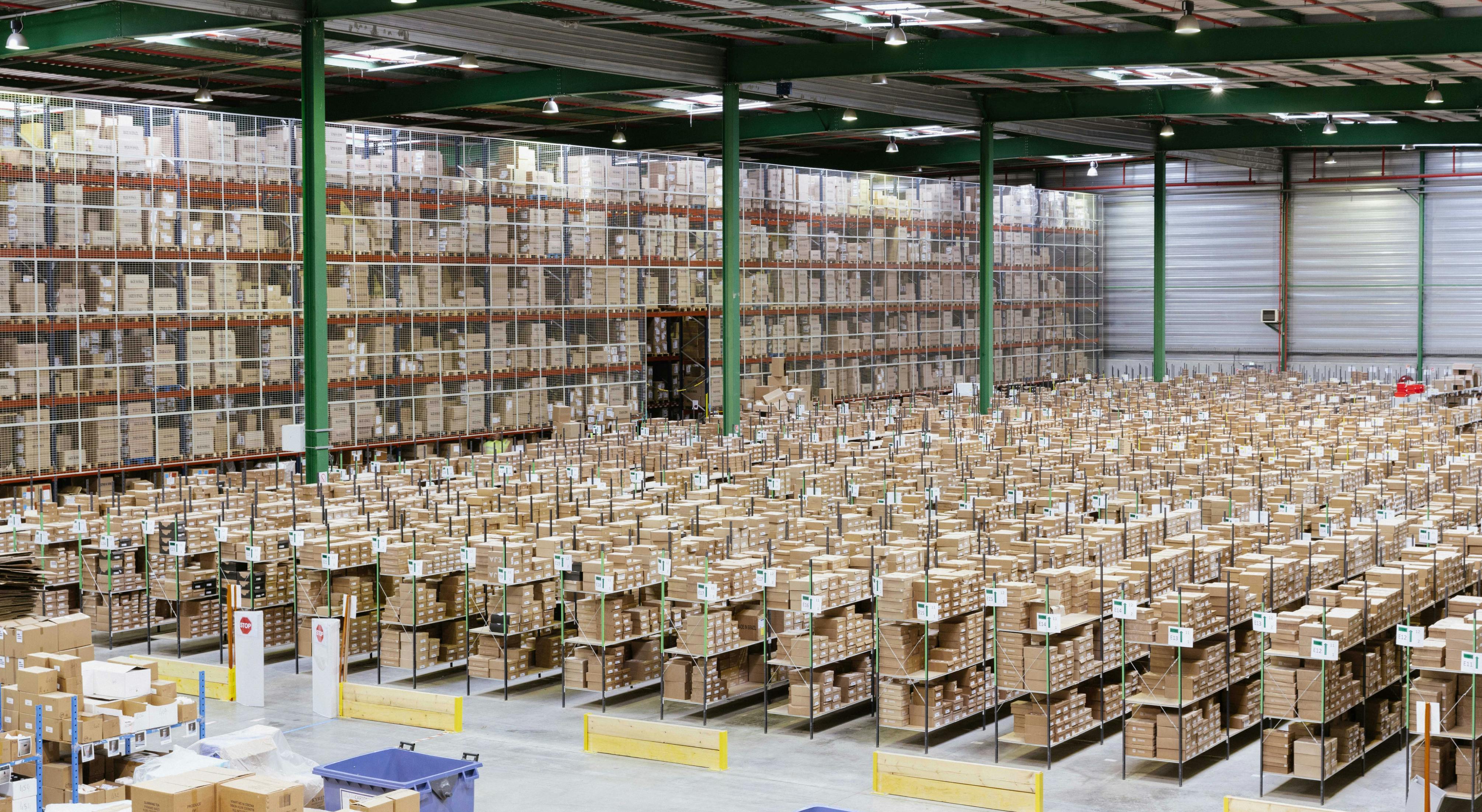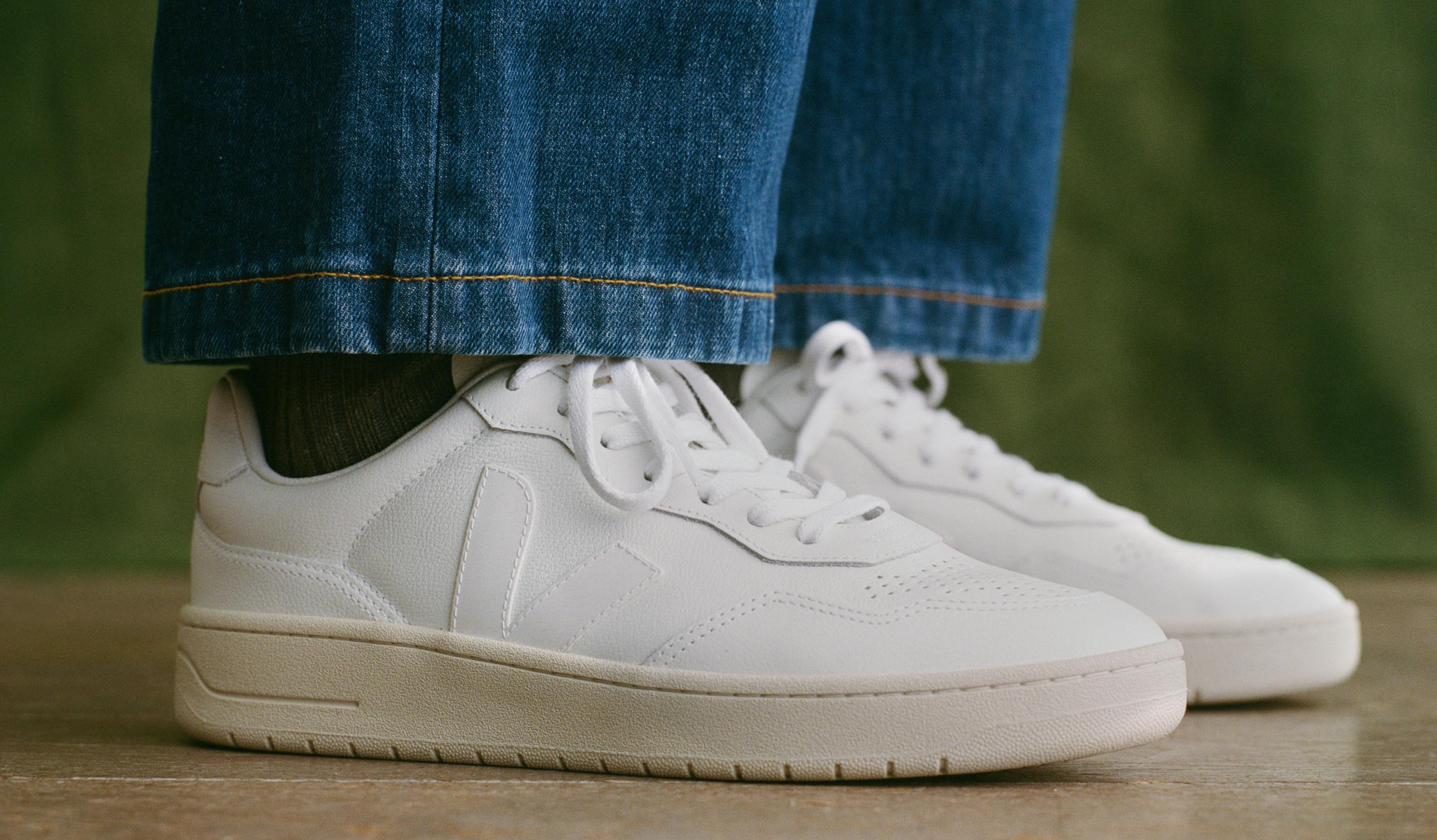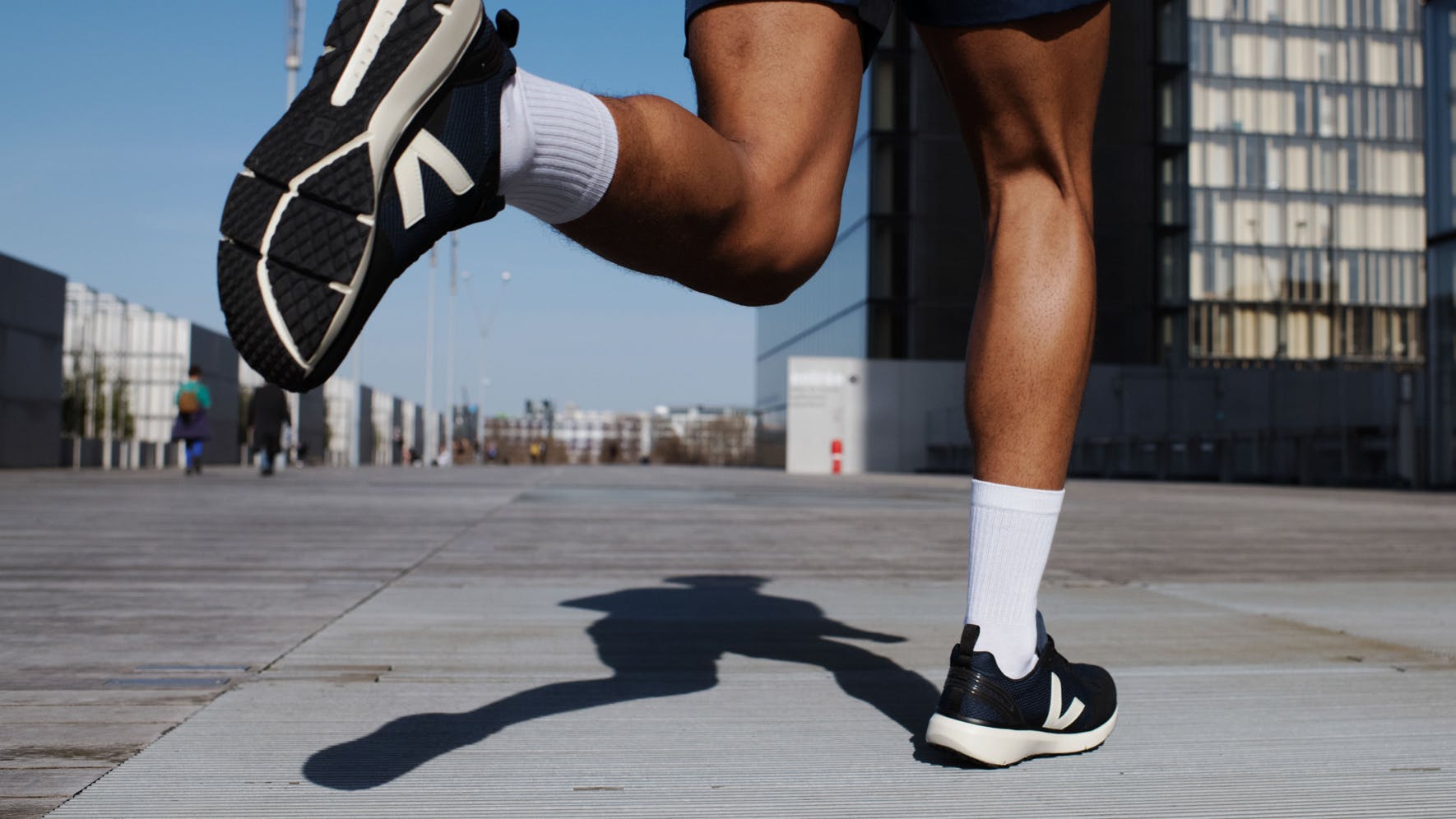CO2 emission
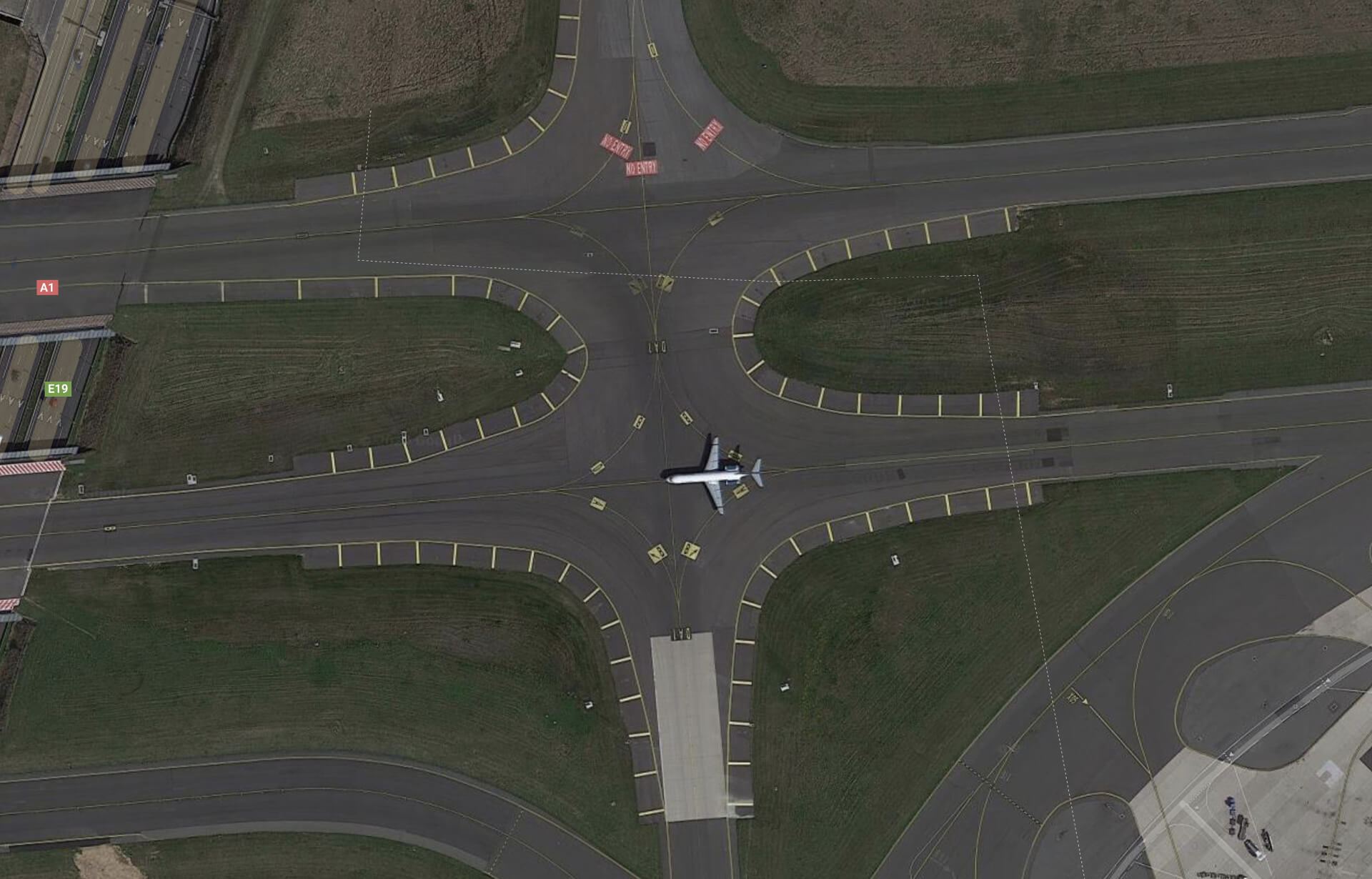
CO2 emissions reports are usually hard to understand. The methodology used to measure emissions is complex, often vague.
Most companies do not include their supply chain, mostly because they neglect what is happening in them. That is why they publish incomplete results.
We decided to conduct a study about our CO2 emissions to get even deeper into the reality of VEJA.
We tried to make our results accessible for everyone while going deep into a supply chain that we already know intimately.
We believe the only way to defeat blind spots is to calculate everything and release everything.

But first, what are CO2 emissions?
Our collective carbon footprint is how much CO2(carbon dioxide) and other gases go into the air. A certain amount of carbon dioxide happens naturally in the atmosphere but human activities have increased these levels.
Global CO2 emissions by region
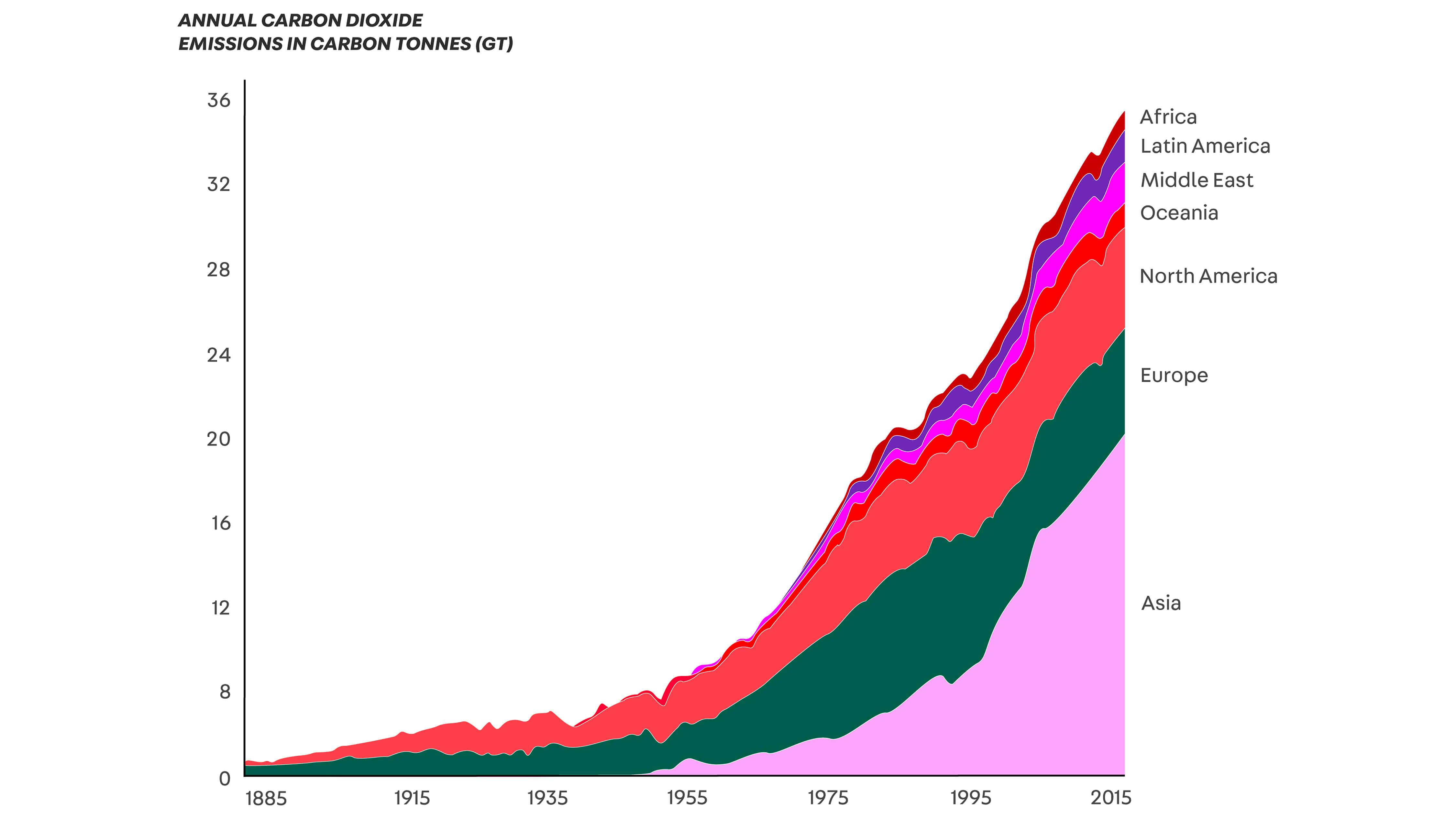
© Consultancy.uk
Carbon is everywhere. It is in the air we breathe (and exhale), the food we eat and the products we purchase and use.
1kg of CO2 equals the consumption of 12 kWh of electricity (in France).
Some examples of what you can power with one kWh :

48 hours of laptop use
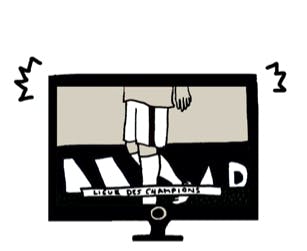
Having your television turned on for approximately 3 hours

One cycle of your washing machine

Using your kettle ten times
How are these
emissions calculated?
We decided to take everything into account.
It means calculating a lot more than what we should, starting with the raw materials, accounting for transportation, the sneaker factories and transportation for shipping.
As lots of companies consider scope 1 and scope 2, the most significant and direct activities, we were mostly interested in scope 3, which is the sneaker production and raw materials.
- North-East of Brazil and Chincha, Peru Canvas made of organic cotton
- Acre and Amazonas, Brazil Soles made of Amazonian rubber
- Porto Alegre and Fortaleza, Brazil Products crafted with dignity
- Santo André, Brazil
B-Mesh, a fabric made of 100% upcycled plastic bottles - France Part of VEJA’s logistic is managed by Log’ins, a professional and social inclusion company
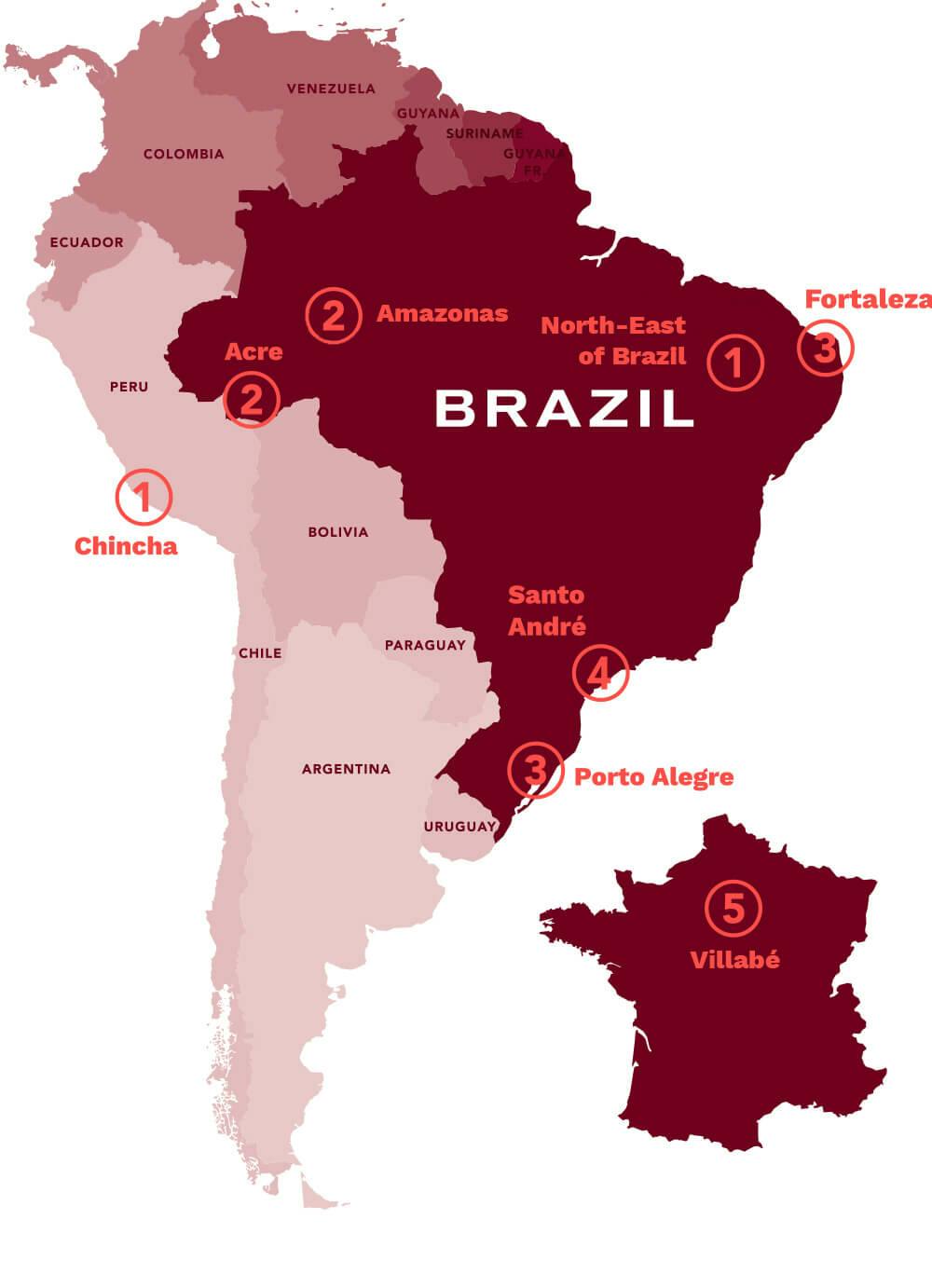
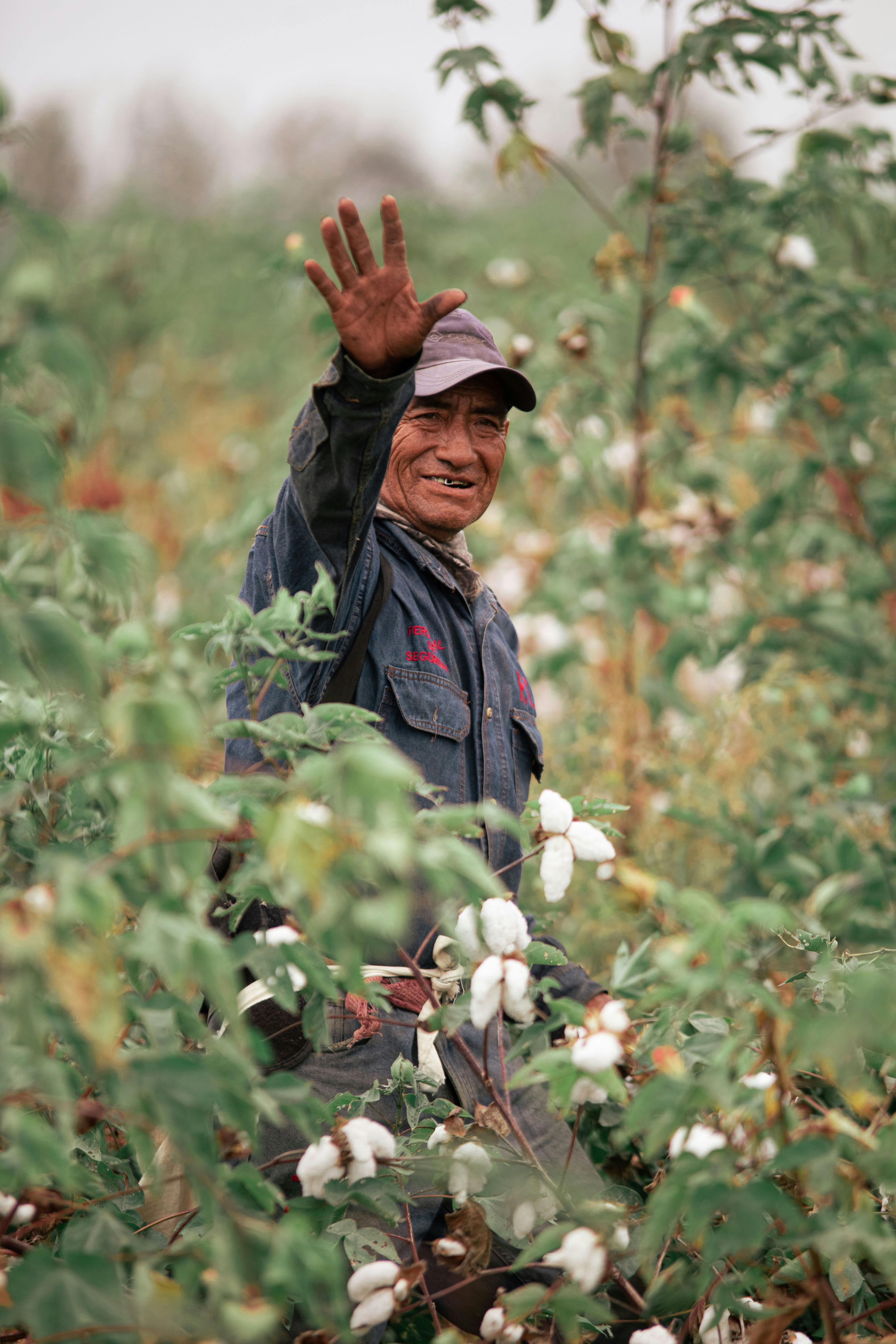
Organic cotton producer
Brazil, 2018
© VEJA
Members of the sourcing team took almost a year to gather all the data and details, which was easier for us since VEJA works directly with rubber and organic cotton producers.
We chose the UTOPIES agency to help us with this reporting. We have known them for more than 15 years, and trust them fully as they are one of the best French sustainable agencies.
We asked them to deliver the most detailed and transparent study they could. The challenging part was to gather all the logistics information.
The big secret of CO2 emissions
When we first gathered all the data, we were very surprised.
Scope 1 is the “direct activities” of the company, which was close to zero when we calculated our emissions for the first time in 2019.
Our emissions were 12,8 tCO2e for Scope 1 in 2021.
Scope 2 involves the energy used directly by VEJA, electricity, and heating. This scope does not include sneaker production or raw materials.
Our emissions were 3,5 tCO2e for Scope 2 in 2021.
Scope 3 is the only way to get a clear picture of our global impact. It includes all the activities, materials, electricity, and fuels involved in the fields, factories, and offices.
Our emissions were 69 765,4 tCO2e for Scope 3 in 2021.
Scope 1 and 2 represent 0,03% of VEJA's total carbon footprint.
Scope 1
The company’s direct activities such as VEJA’s cars in Brazil.
Company vehicles


VEJA's car
Brazil, 2008
@VEJA
Scope 2
The energy consumption from the offices and shops.
Electricity / Heating

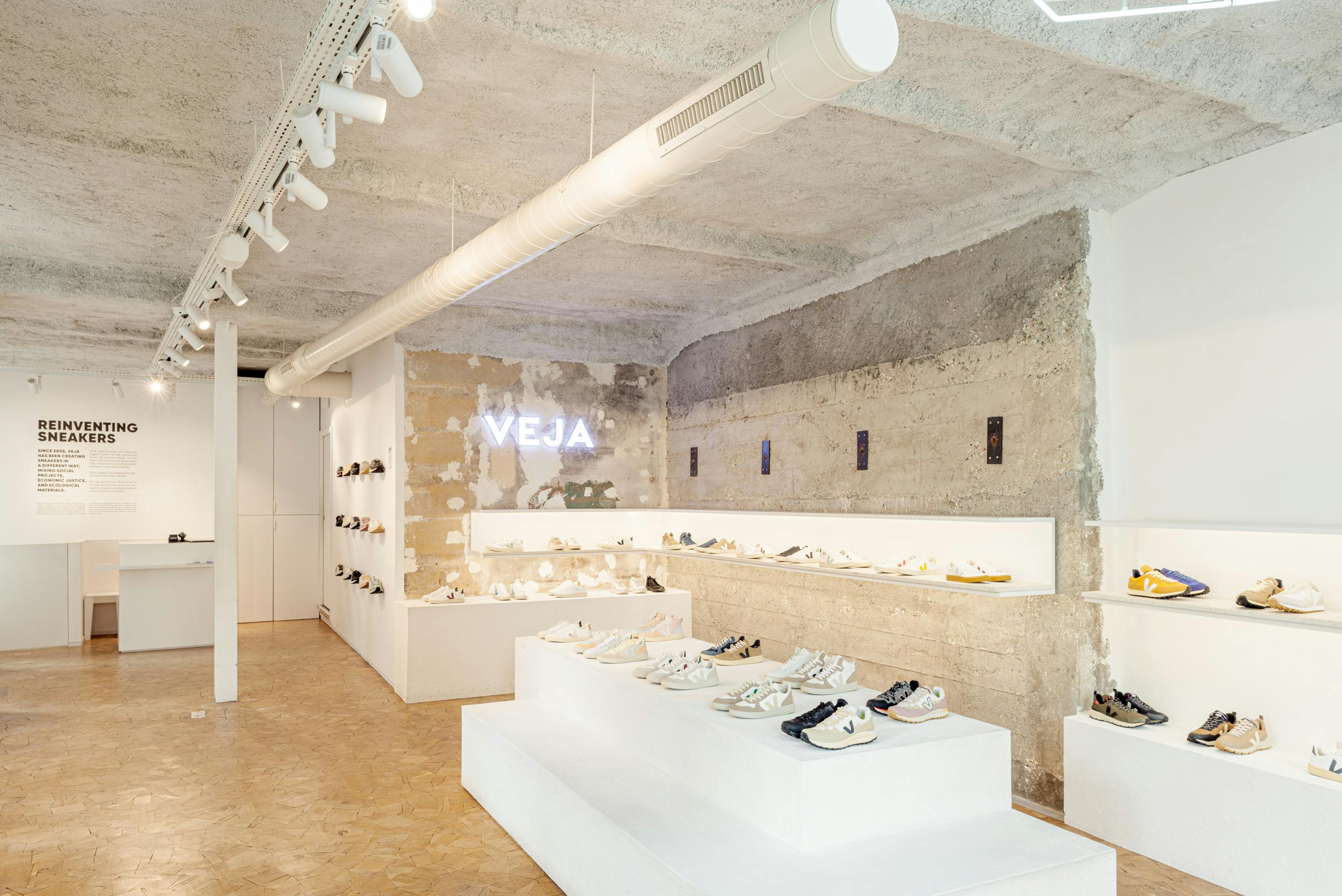
Showroom VEJA
Paris, 2019
© VEJA
Scope 3
All activities carried out by our suppliers and partners (from the fields to the factories and our offices).
Raw materials (organic cotton, Amazonian rubber, leather, other materials)
Freight (from the fields to the factories)
Shoe factories (electricity, other fuels, wasted materials)
Distribution (warehouses, customers, and retailers)
End of life (pairs of shoes collected, repaired, reused and recycled)
Offices (Paris office, wasted materials, business travels, commuting)
69 765,4 t CO2e in 2021
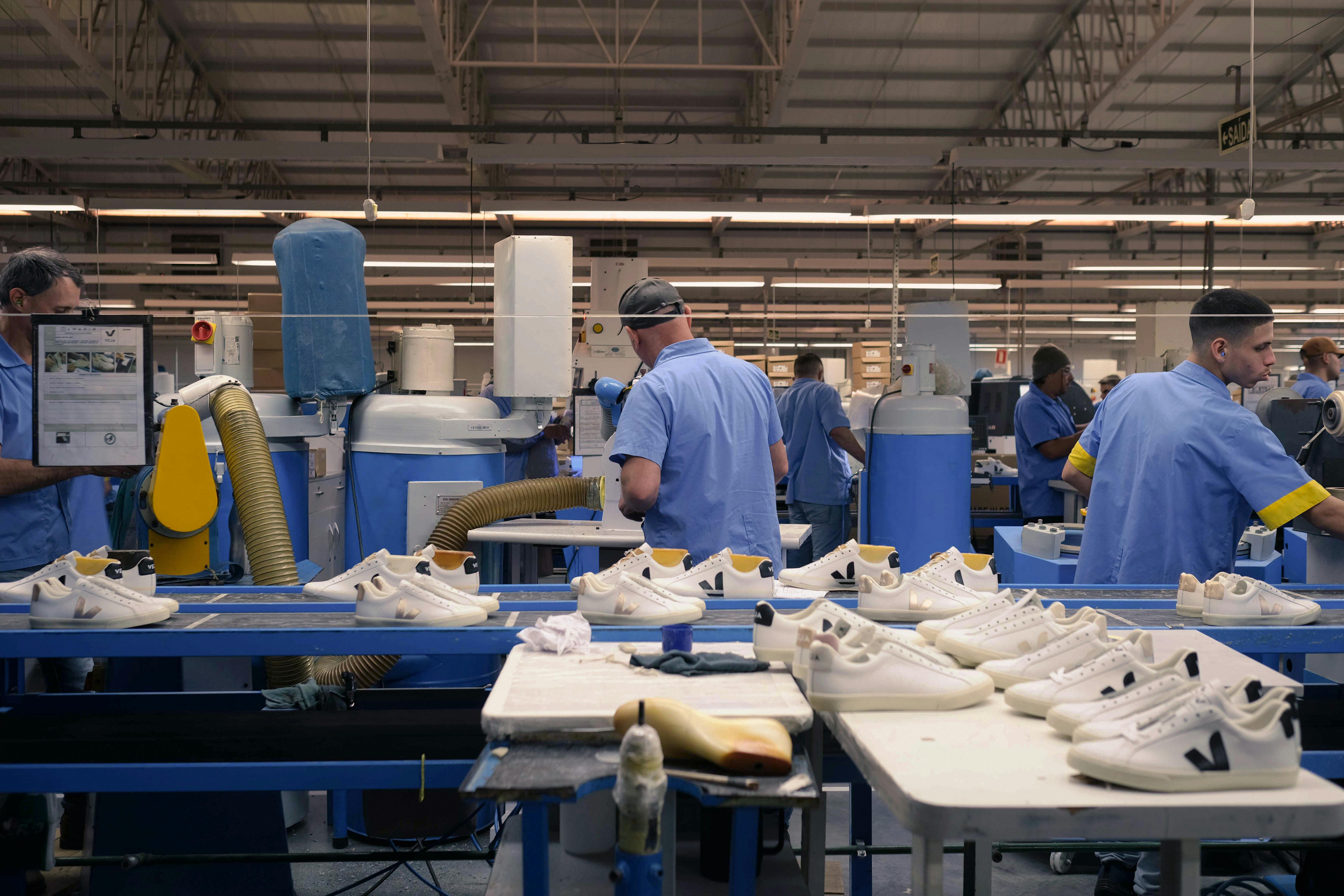
Manufacturing plant
Brazil, 2019
@VEJA
Everyone claims: “those are not MY CO2 emissions” but rather the emissions of someone else who is part of the process. But because they are not our team, the emissions do not belong to us.

Scope 2
VEJA’s headquarter relocated the offices based in Paris.
The office based in Rue de Cerisaie had a high consumption of gas for the heating system. (In 2019 it consumed 15.997 kWh in electricity and 122.010 kWh in heating.)
We were clear that we wanted to calculate everything, from the raw materials passing through production, transportation, and logistics.
Everything is our impact. Only scope 3 matters.
If we compare the emission from Scope 1 and 2 from 2019 and 2020, VEJA emissions decreased by more than 70%. How?
Scope 1
Due to the pandemic, employees did not employ the cars owned by VEJA in Brazil as often as in 2019.
In the new office, Rue de Paradis, we chose Enerccop to provide us with 100% green electricity. (it consumed 75.133 kWh in 2020)
Our consumption of electricity and heating comes from renewable sources.

So, why are VEJA's CO2 emissions high?
VEJA’s CO2emissions are high compared to other brands because we take everything into account.
Proportion of VEJA’s CO2 emissions in 2019

OFFICES/SHOPS/E-SHOP IN 2021 4,6%
All activities related to our offices and shops like wasted materials, acquisitions, facilities, vehicles, electricity, team travels, commuting, gas heating or even our postal services.
SNEAKERS TRANSPORTATION IN 2021, 12,8%
Distribution from Brazil to our warehouses, customers, and retailers.
SHOE FACTORIES IN 2021, 2,5%
The electricity, waste and fuels consumed by our shoe factories.
RAW MATERIALS TRANSPORTATION IN 2021, 0,5%
Freight of our raw materials. Collecting and transporting them from the fields to the shoe factories.
RAW MATERIALS IN 2021, 79,3%
All the raw materials we use to produce our shoes such as leather, organic cotton, and Amazonian rubber.
The energy consumed by processing any of our raw materials during manufacturing as well as the waste we generate.
END OF LIFE IN 2021 3,3%
Shoe packaging and an approximation of our pairs collected, repaired, reused, and recycled.


Which emissions for
which models?

© VEJA
A leather model emits four times more CO2 emissions than an organic cotton model.
We realized leather played a big role in our study.

The impact of leather
79,3% of our CO2emissions are generated by our raw materials: organic cotton, Amazonian rubber, leather and innovative materials such as B-Mesh, Hexamesh and Alveomesh. 97,43% of those emissions are due to leather.
We considered the impact we generate starting from the farms' producers to the tannery
We were able to trace our leather from the direct farmers to the slaughterhouse, but not the indirect ones.
The indirect farmers are the ones breeding the calves and sending them to the direct farmers we work with, who will raise them for cattle.

Leather factory
Brazil, 2018
© VEJA

Cattle
Brazil
© VEJA
The leather used to produce our sneakers comes from farms in Southern Brazil and does not come from any areas suffering deforestation.
Even if using leather is not always the best option, it allows us to produce long-lasting sneakers.
As the animals are raised and sold for their meat and not their skin, leather is considered a byproduct. We give this leather a value and use it afterward.
On average, 70% of the leather carbon footprint occurs during cattle raising (mostly cattle natural digestion process).
The remaining 30% is from leather production, tanning and transportation.
Since 2008, we have been working on ways to improve the leather production chain and focusing on its traceability and chemical transparency.

Proportion of leather
used in VEJA’s collections

All of our leathers do not contain hazardous or prohibited chemicals
We use ChromeFree leather in all our kid lines and selected styles for the adult collection.
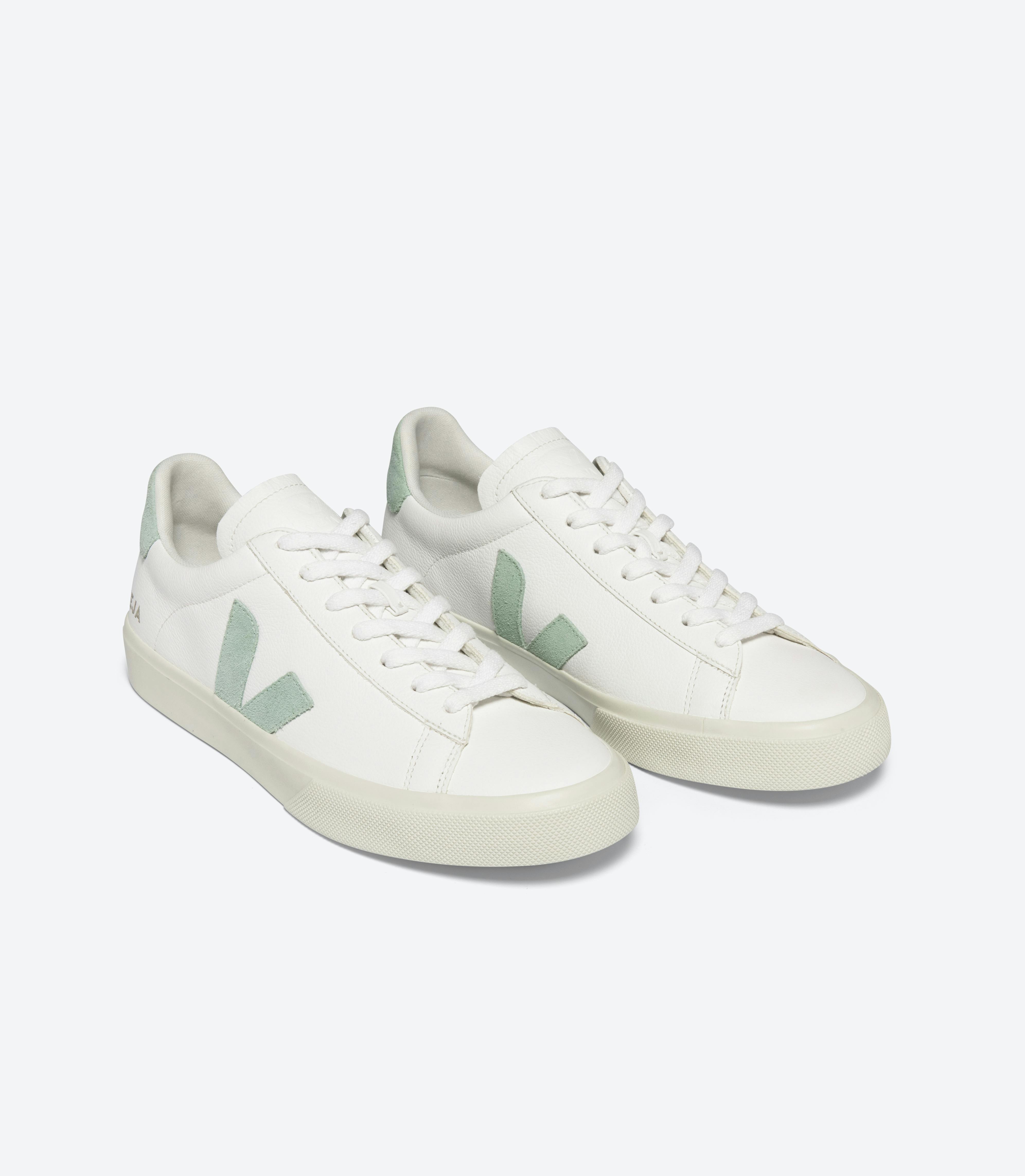
© Vincent Desailly
After some years of research, we started working with leather alternatives that are more ecological than plastic.
In 2019, we launched our first model made of C.W.L, which is a vegan alternative to leather. It is made of organic cotton canvas coated with corn starch and ricinus oil.
We upcycle plastic bottles to turn them into alternative materials to give waste a second life.
B-mesh is a fabric entirely made of recycled polyester and Hexamesh is composed of 70% organic cotton and 30% recycled plastic bottles.
This leather undergoes an innovative tanning process where no chrome, heavy metals or dangerous acids are involved.
Our tanning process uses less energy and reduces water usage by up to 40% and salt by 80%. After, the water is still recyclable.

© VEJA

Plastic bottles before transformation
2014
© VEJA

The impact of organic cotton and Amazonian rubber
Growing, collecting, and transforming our organic cotton and Amazonian rubber accounts for 0,5% of our raw materials emissions.

Bleeding in Amazonian rubber
Brazil, 2016
© VEJA
Organic cotton and Amazonian rubber are some of the main materials of our sneakers.
We bought more than 1953 tons of Amazonian rubber and 1052 tons of organic cotton from 2004 till the end of 2021.
As we work every day with families of producers, we know our impact on the fields.
The benefits of sourcing materials on the fields
Buying Amazonian rubber from seringueiros (rubber tappers) enhances the economic value of the forest and the families who protect it. They earn more money tapping rubber than raising cattle to fight against deforestation.
VEJA produced in 2021 every outer sole out of 20 to 40% rubber from the Amazonian rainforest.

Outsoles in Amazonian rubber
Brazil, 2019
@VEJA
Even with the increase in production, we saved up to 29 tons of CO2e just by increasing our use of Amazonian rubber.
The impact of Amazonian rubber is 0,67 tCO2e per ton (production & logistics) compared to 2,49 tCO2e per ton for Styrene-Butadiene Rubber SBR, a type of synthetic rubber.
Amazonian rubber emits about 73% fewer greenhouse gases than conventional rubber used in the industry.
Practicing agroecology for the organic cotton used in our sneakers helps with carbon absorption.
It also fertilizes the soil and optimizes the water cycle without using any pesticides or chemicals. In a more specific way, VEJA uses regenerative agriculture.

Cotton bolls
Brazil, 2018
@Melanie Bahuon
Cotton is organic, but the way it is grown goes even further: it is harvested in the same field as subsistence crops like corn, sesame, or beans. This allows the producers to have food independence while enriching the soil.
Even though those methods of agriculture could compensate for our CO2 impact, we did not include them in this first study.
All our raw materials come from Brazil and Peru. They are transported by truck and vessel from the fields directly to our different factories from both countries. This way, we ensure we avoid the impact of transatlantic transportation.

Shipping by boat
or by plane?
In 2019, 81% of VEJA’s transportation was by sea and only 19% by plane. However, we realized that those 19% represented 95% of our CO2 emissions of distribution.
Due to occasional delays in production, air transport was employed to ship around 19% of the pairs volume.
Realizing this, we acted in 2020 to reduce those emissions: only 7% of VEJA’s transportation was done by plane.
Our biggest retailers still ask for our pairs to be prioritized and to be sent by plane. Following this study, our purpose in 2021 is to ban the use of airfreight to ship our pairs from Brazil to our retailers.
We chose to reduce air freight for transportation from our factories to the retailers and prioritize cargo boats instead.
Shipping by plane, 2019
Boat distribution

Plane distribution

VEJA's distribution / CO2 emissions generated by distribution
The teams’
carbon print
For us, the change had to start with our daily practices at the offices.
We gathered the data from all our VEJA team members and staff about trips taken throughout the year.
To reduce this percentage, when traveling is needed for conferences or trades, we use the train as the main transport if the trip takes less than six hours.
As our offices are based in Paris, Brazil and New York, our teams take public transport, bicycles or even come on foot to the offices as it is more convenient in big cities.
In Brazil, we use two cars as some of our factories and fields are only accessible by vehicle.

Part of the VEJA Team
Peru, 2019
© VEJA

Collect, repair, recycle
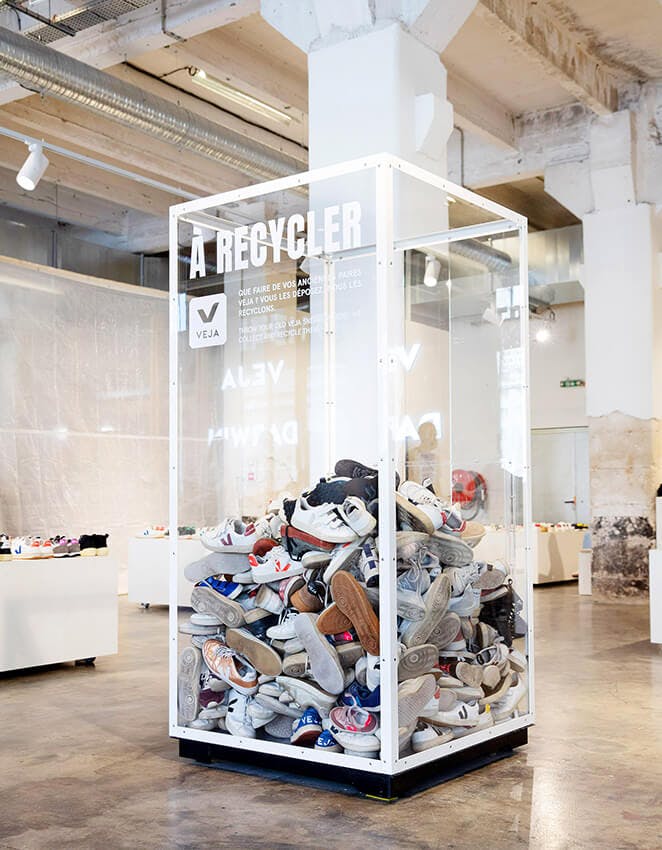
Recycling box at VEJA x Darwin
Bordeaux, 2020
© VEJA
The end of life of our sneakers generates 3,3% of our emissions. Even though those emissions are not high, it has always been one of our biggest concerns.
In June 2020, we launched our new project VEJA x Darwin, a test-hub for cleaning, repairing and recycling old sneakers.
It gathers never launched VEJA prototypes, sneakers with minimal defects and a few pairs from old collections.
Our cobbler, repairs and cleans worn pairs of sneakers, while those in poor condition will be collected and recycled.
For us, the most sustainable sneakers are the ones you are wearing.
Even if they belong to another brand.

VEJA x Darwin
Bordeaux, 2020
© VEJA
The missing results
In this study we could not include :
The waste produced by the shops and warehouses we work with.
Furniture in the different offices.
The delivery chain from retailers until their final customers.
Auxiliar materials included in our insoles, outsoles, or the tongues of our shoes.
Our eyelets, because they are made of metal we did not source ourselves.

© VEJA

How we reduce our CO2 emissions
Increase the proportion of more ecological leather
The ChromeFree leather we use on the Campo styles represented 8,55% of the adult line in 2019.
It represented 19% in 2020. 45% in 2021.
On the Kids line, the ecological leather is already used on 100% of the models.
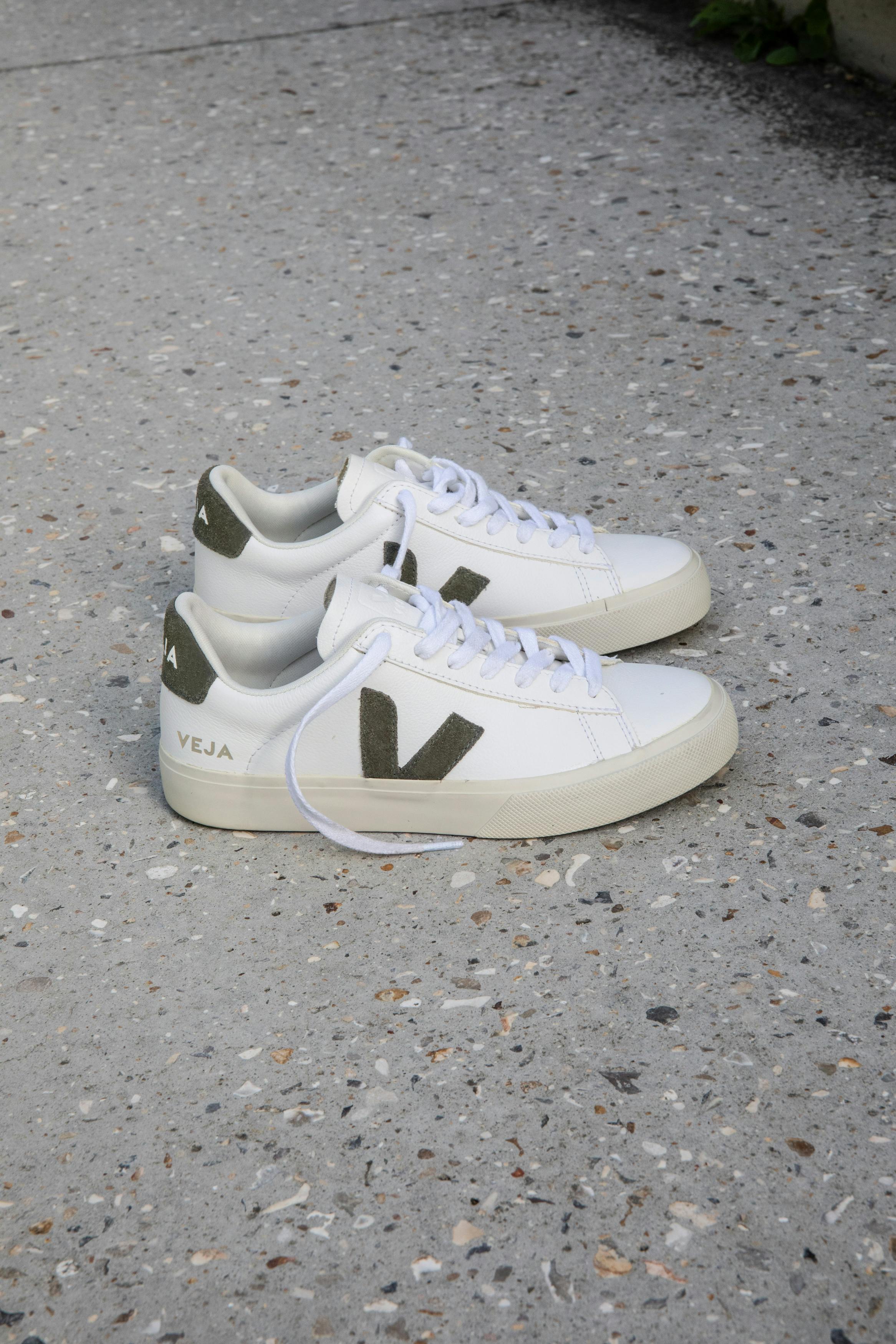
Campo Chromefree White Kaki
Lookbook AH19
© VEJA
Our goal is to expand ecological leather across our collections, with the traceability that allows us to claim that this ecological leather emits significantly less CO2 than our standard leather.
To produce this material, we use 35% less energy and 40% less water during the tanning process than for a regular leather sneaker.
Reduce the presence of leather in our collection
For AW20, the leather styles represented 51% of our total production.
Proportion of the materials in VEJA's production


Use recycled fibers
We also use recycled fibers such as B-mesh.
Made from 100% recycled polyester, three plastic bottles are needed to make one pair of VEJA sneakers.
When producing a V-10 B-mesh model, the emissions released are 16,60 kgCO2e while an Esplar full leather style accounts for 21,5 kg CO2e.
Choose clean energy
95%* of the 190.180-kWh consumed by VEJA in 2020 came from renewable sources.
163.499 kWh is the amount consumed by our two offices and four shops based in Paris, which have their electricity supplied by Enercoop, a cooperative company producing 100% renewable energy in France.
Enercoop guarantees electricity 100% renewable (water, wind, sun, biomass) and 0% of nuclear origin thanks to a direct supply from more than 300 producers throughout France.

Paradis
Paris, 2019
© VEJA
The VEJA team in France counts with 382 employees.
VEJA owns two stores in France.
The first one is located at Rue de Poitou with a surface of 90m², and VEJA x Darwin is located in Bordeaux with a total surface of 350m².
We also took into account our Centre Commercial stores located at Rue de Marseille with 200m² and Rue Madame with 140m² for the adult's shop and the kid's shop with a surface of 160m².
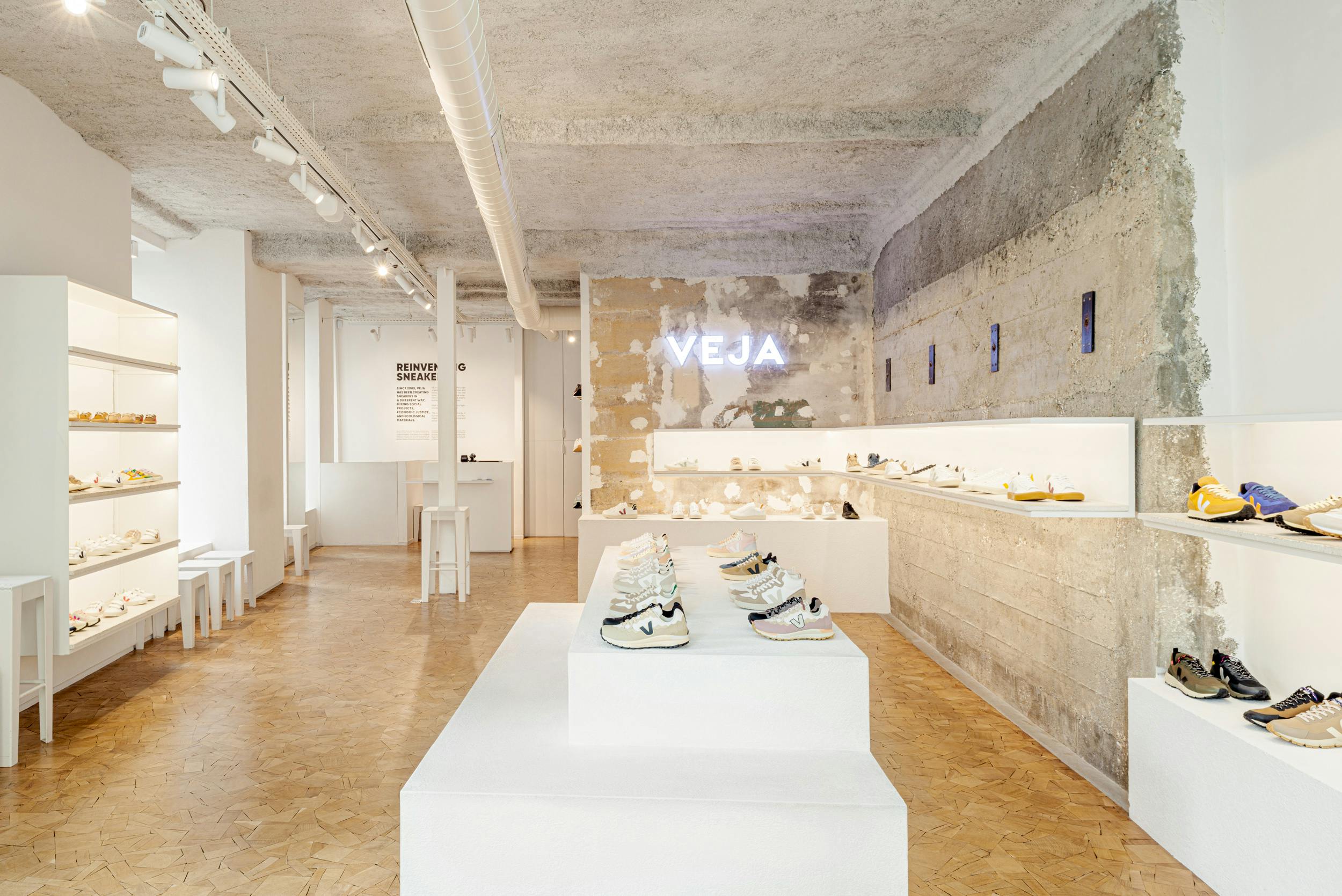
VEJA Rue de Poitou
Paris, 2019
@VEJA

Rue de Turenne
Paris, 2019
@VEJA

VEJA store
Flagship store VEJA New York, 2020
© VEJA
In 2020, VEJA opened its first store in the US.
The first year, the energy consumption was 17.532 kWh of electricity supplied by Abest.
They supply our New York office and store with 100% renewable wind energy.
Abest sources their renewable electricity supply from clean and energy-efficient wind farms across the United States.
For 2021, the VEJA teams count with 13 people in New York.
We have an office with a surface of 204m², and our store located in NoLita has a total surface of 74m².

VEJA offices
Brazil, 2018
@VEJA
VEJA has two offices located in Brazil.
The first one in Southern Brazil to coordinate the production of sneakers.
The second one is located in ACRE, where our team manages the Amazonian rubber supply chain.
Together, In 2020, these two offices consumed 9.199 kWh.
In Brazil, 65% of the electricity is produced by hydroelectric: 8,4% from biomass, 8,6% wind, 1% from solar, 9,3% natural gas.
So, 83% of the electricity in Brazil comes from renewable sources.
However, only large consumers with high energy demands can choose their electricity supplier.
Small consumers like VEJA need to use the electricity supplied by local regulated distributors.
The VEJA team in Brazil in 2022 counts with 87 employees.
Our office space in Campo Bom, Brazil has 500 m², including VERT distribution center.
*The electricity consumption of the offices based in Brazil was not considered renewable because 17% comes from non-renewable sources.
If we were to consider the total amount of renewable energy VEJA uses, 99,2% of VEJA's total electricity consumption comes from renewable sources.
Stop shipping by plane
However, that 19% represented 95% of our CO2 distribution’s emissions. Airfreight is approximately 100 times more polluting than sea freight.
In 2020, only 7% of our transportation was done by plane.
Following this study, our purpose in 2021 is to ban the use of airfreight to ship our pairs from Brazil to our retailers.
This initiative will help us to reduce our transportation CO2 emissions by 92%.
Back in 2019, we knew we could reduce the end of life emissions by 40% by offering our customers the opportunity to bring back their worn pairs. The end of life of VEJA’s sneakers was responsible for 1 009 tCO2e. If VEJA had introduced a take-back program, the emissions would have been 600 tCO2e.

Santos’ port
Paris, 2019
© Unsplash
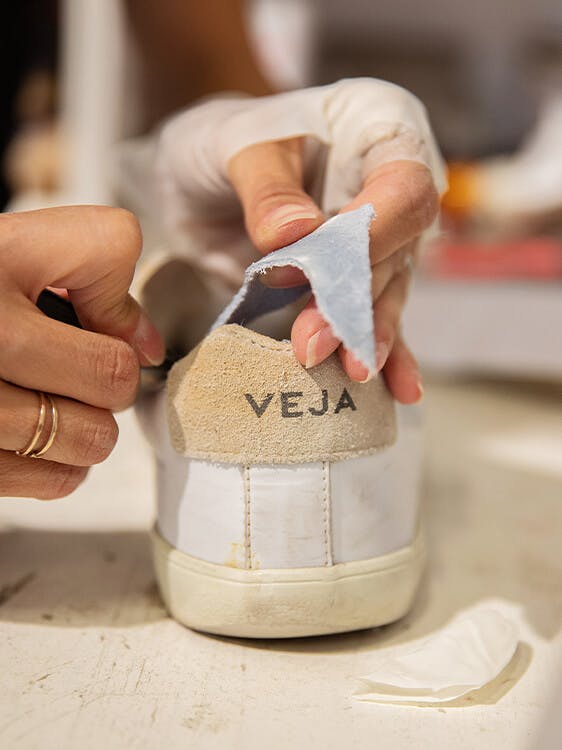
Reparation of a VEJA sneaker
Darwin, Bordeaux, 2020
© VEJA
Recycle our shoes
We are now able to save those emissions. We started with VEJA x Darwin in June 2020, and are now collecting old sneakers to be cleaned, repaired, or recycled in our shops in Paris, Bordeaux, and New York.
Carbon is one type of data used to measure the impact and value of nature. There are many other ways to do it, such as Biodiversity, Water availability, or even Scenic Beauty and Legacy.
Rubber and regenerative agriculture are more than Carbon
These Ecosystem Services are still at the beginning of being understood. Before that happen, we are already working on it.
The Agroecological Cotton that regenerates the soil and the Native Rubber that protects the Amazon are practices that provide much more than just carbon capture.
While we are still measuring it, we feel we do not need data to know that we must keep pushing it.

Organic cotton during harvesting
Peru, Chincha
© VEJA





